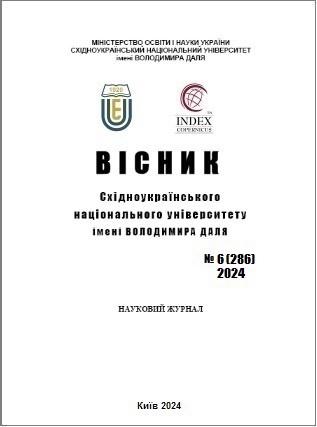Еvolution of neural networks and their role in marketing
DOI:
https://doi.org/10.33216/1998-7927-2024-286-6-92-103Keywords:
neural networks, marketing, personalization, artificial intelligence, automation, generative models, GPT-4, DeepSeek, predictive marketingAbstract
The evolution of neural networks and their role in modern marketing has been studied. The historical development of neural networks is examined - from the first theoretical models by W. McCulloch and W. Pitts to modern multimodal systems. The development of theoretical foundations for neural network construction is briefly highlighted. It shows how neural networks have transformed marketing approaches: from transactional data analysis in the 1990s in the early stages of neural network development, implementation of personalized recommendation systems and automated content management platforms (2000-2010) to modern multimodal neural networks, which in perspective will allow transition to full personalization and autonomous marketing systems. Special attention is paid to modern generative models that create advertising texts, images and video content, as well as predictive marketing systems that forecast customer behavior in real time. The impact of neural networks on communication personalization, marketing process automation and decision-making is revealed. The implementation of such systems is analyzed using global brands as examples, and modern developments in artificial intelligence are briefly described. It is shown that neural networks are becoming not just a tool, but an autonomous agent of marketing processes, opening an era of proactive, personalized marketing. It is demonstrated that neural networks in marketing are evolving from an auxiliary tool to the status of an autonomous agent in marketing processes. Key challenges of modern marketing related to the use of neural networks are identified: data privacy, algorithm ethics, balance between automation and human creativity. It is highlighted that the use of neural networks in marketing began for specific tasks but tends to evolve towards complex consumer interaction that will allow marketing personalization and prediction of behavioral responses. It is substantiated that further development of neural network technologies leads to the formation of a new marketing paradigm, in which artificial intelligence not only analyzes data and automates processes but becomes a full participant in marketing activities, capable of making independent decisions and adapting to changes in the market environment.
References
1. McCulloch W.S., Pitts W. A logical calculus of the ideas immanent in nervous activity. Bulletin of Mathematical Biophysics. 1943. Vol. 5(4). P. 115–133.
2. Anderson J.A., Rosenfeld E. Talking Nets: An Oral History of Neural Networks. Cambridge : MIT Press, 2000. 448 p.
3. Lindstrom M. Buyology: Truth and Lies About Why We Buy. New York : Crown Business, 2008. 256 p.
4. Литовченко І.Л., Пилипчук В.П. Інтернет-маркетинг : навчальний посібник. Київ : Центр учбової літератури, 2008. 184 с.
5. Кононик О.П., Кононик Н.О. Нейронні мережі і генетичні алгоритми: монографія. Вінниця : ВНТУ, 2008. 470 с.
6. Goodfellow I., Bengio Y., Courville A. Deep Learning. Cambridge : MIT Press, 2016. 800 p.
7. Kroese D.P., Brereton T. Artificial Neural Networks and Structural Equation Modeling. Singapore : Springer, 2019. 300 p.
8. Kingsnorth S. Digital Marketing Strategy: An Integrated Approach to Online Marketing. London : Kogan Page, 2019. 384 p.
9. Kotler P., Kartajaya H., Setiawan I. Marketing 5.0: Technology for Humanity. Hoboken : Wiley, 2021. 272 p.
10. Lanham M. Evolutionary Deep Learning: Genetic Algorithms and Neural Networks. New York : Manning Publications, 2022. 384 p.
11. Лядський І.К. Маркетинг 6.0 — як сподобатися Siri? Маркетингове забезпечення продуктового ринку : матеріали XVI Міжнар. наук.-практ. конф., м. Полтава, травень 2024 р. Полтава : ПДАУ, 2024. С. 26-28.
12. Rumelhart D.E., Hinton G.E., Williams R.J. Learning representations by back-propagating errors. Nature. 1986. Vol. 323(6088). P. 533-536. DOI: 10.1038/323533a0.
13. Lippmann R.P. An Introduction to Computing with Neural Nets. IEEE ASSP Magazine. 1987. Vol. 4(2). P. 4-22. DOI: 10.1109/MASSP.1987.1165576.
14. Mayer-Schönberger V., Cukier K. Big Data: A Revolution That Will Transform How We Live, Work, and Think. Boston : Houghton Mifflin Harcourt, 2013. 242 p.
15. Evenson A., Henke N. The Age of Analytics: Competing in a Data-driven World. McKinsey Quarterly. 2016. URL: https://www.mckinsey.com/business-functions/mckinsey-analytics/our-insights/the-age-of-analytics-competing-in-a-data-driven-world (дата звернення: 11.12.2024).
16. Deaton J. How Facebook's AI Ads Learn to Match Your Emotions. Harvard Business Review. 2017. URL: https://hbr.org/2017/11/how-facebooks-ai-ads-learn-to-match-your-emotions (дата звернення: 13.11.2024).
17. eMarketer. US Programmatic Ad Spending Forecast 2018. URL: https://www.emarketer.com (дата звернення: 13.11.2024).
18. Juniper Research. Chatbots to Drive $8bn in Cost Savings Annually by 2022. URL: https://www.juniperresearch.com/resources/infographics/chatbots-to-drive-8bn-in-cost-savings-annually (дата звернення: 13.12.2024).
19. McKinsey & Company. The State of AI in 2022. URL: https://www.mckinsey.com/capabilities/quantumblack/our-insights/the-state-of-ai-in-2022 (дата звернення: 13.12.2024).
20. OpenAI. GPT-3: Language Models are Few-Shot Learners. URL: https://arxiv.org/abs/2005.14165 (дата звернення: 13.12.2024).
21. Gartner. Predicts 2024: Future of Marketing. URL: https://www.gartner.com/en/insights/marketing (дата звернення: 13.11.2024).
22. Deloitte Insights. Predictive Marketing Systems and the Next Era of Customer Loyalty. URL: https://www2.deloitte.com/insights/us/en.html (дата звернення: 13.12.2024).
23. OpenAI. GPT-4 Technical Report. URL: https://openai.com/research/gpt-4 (дата звернення: 13.11.2024).

